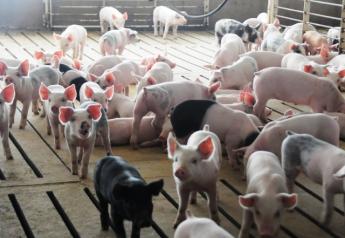Is a Global Pork Balance Possible?

Record Chinese pork imports and double-digit increases in shipments to other Asian nations hit hard by African swine fever (ASF) have buoyed the fortunes of the global pork industry since 2019, according to Rabobank Pork Quarterly’s lead author Christine McCracken, senior animal protein analyst, Rabobank, in its latest report.
The lost domestic pork demand and weaker exports because of COVID-19 have been offset by increased Asian demand. Rabobank said China accounts for over 40% of global pork imports, more than four times larger than its closest competitor.
But the question remains – what will happen when China restores its domestic hog production and weans itself off the global market?
China Ramps Up Sow Herd
“Exporters will be hard-pressed to find alternative markets for these volumes. Markets glimpsed how integral the Chinese market has become to the global trade balance following the trade dispute with Canada in 2019 and following the recent discovery of ASF in Germany,” McCracken said.
Since the first outbreak of ASF in China, the country has been working hard to regain its self-sufficiency. China began restocking farms in late 2019 and is now transitioning a large share of its backyard hog production into state-of-the-art, biosecure facilities, the report noted.
Rabobank estimates the Chinese breeding herd is currently 15% above trough levels and will continue to expand.
As China ramps up breeding stock imports and makes sizable investments in its genetic base, it reaffirms Rabobank’s view the country is now able to manage any future ASF outbreaks and limit additional herd losses.
The Chinese government continues to affirm its intent to become largely self-sufficient in its pork supply, reducing its reliance on pork imports. If China stays on course, Rabobank predicts the country could return to 95% self-sufficiency in the next four to five years.
“Hog producers face a challenging outlook, given rising feed costs, weaker economic trends, and slower export growth as China rebuilds its domestic hog supply,” McCracken said.
What Will Happen to the Global Overhang?
Rabobank said China’s return to pork self-sufficiency will leave a global supply overhang. Rabobank estimates Chinese production in 2021 will be more than 10%, or nearly 4 million metric tons, larger than levels recorded in 2020 – a reflection of early progress. Rabobank expects this to result in a 20% to 30% drop in pork imports, or about 1 million metric tons, in 2021.
“With five countries responsible for 85% of total pork imports annually, it may be increasingly difficult to redistribute the pork no longer needed by China,” McCracken said. “The drop in Chinese demand will likely force many exporting nations to refocus efforts on secondary trade markets and ultimately result in larger domestic supplies. Given slower projected import demand in the coming years, as most economies are currently facing less robust growth in the interim, this may leave more sizable volumes on the domestic market.”
In short, Rabobank believes this is likely to translate into weaker product pricing and lower hog values.
How Will the Global Market Offset Lost Demand from China?
Low feed costs, strong herd health, new packing capacity, ongoing gains in herd performance and good global demand based on steady economic growth drove an acceleration in hog production from 2015 to 2018, the report said. The added blow of ASF in China and other Asian countries sent a signal to producers in the rest of the world to sustain this production growth. Production in countries excluding ASF-affected regions rose 4.8%, McCracken said.
“The challenge is how to offset the expected decline in Chinese demand with a combination of larger exports into alternative destinations and accelerating domestic demand growth, while also slowing the growth in supply,” the report noted. “With export growth more limited in the next few years, due to a slowing economic outlook, this may be more challenging.”
Growing secondary export markets and increasing domestic opportunities will be key to offset the lost demand from China. Rabobank predicts this will result in a less robust production pipeline and a smaller sow base in countries outside those impacted by ASF in recent years.
Read the full report here.
Read more on Farm Journal's PORK:
Is ASF in Germany Sending the Wrong Signals to U.S. Pork Producers?
NPPC Shares Pork Export Barriers with USTR







